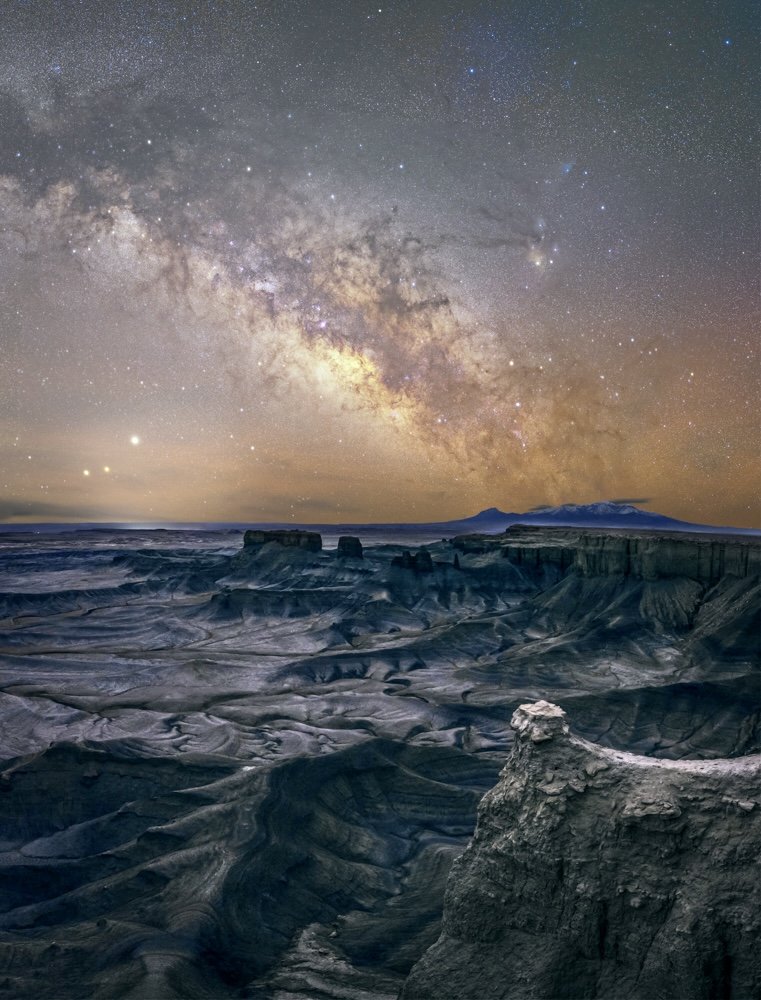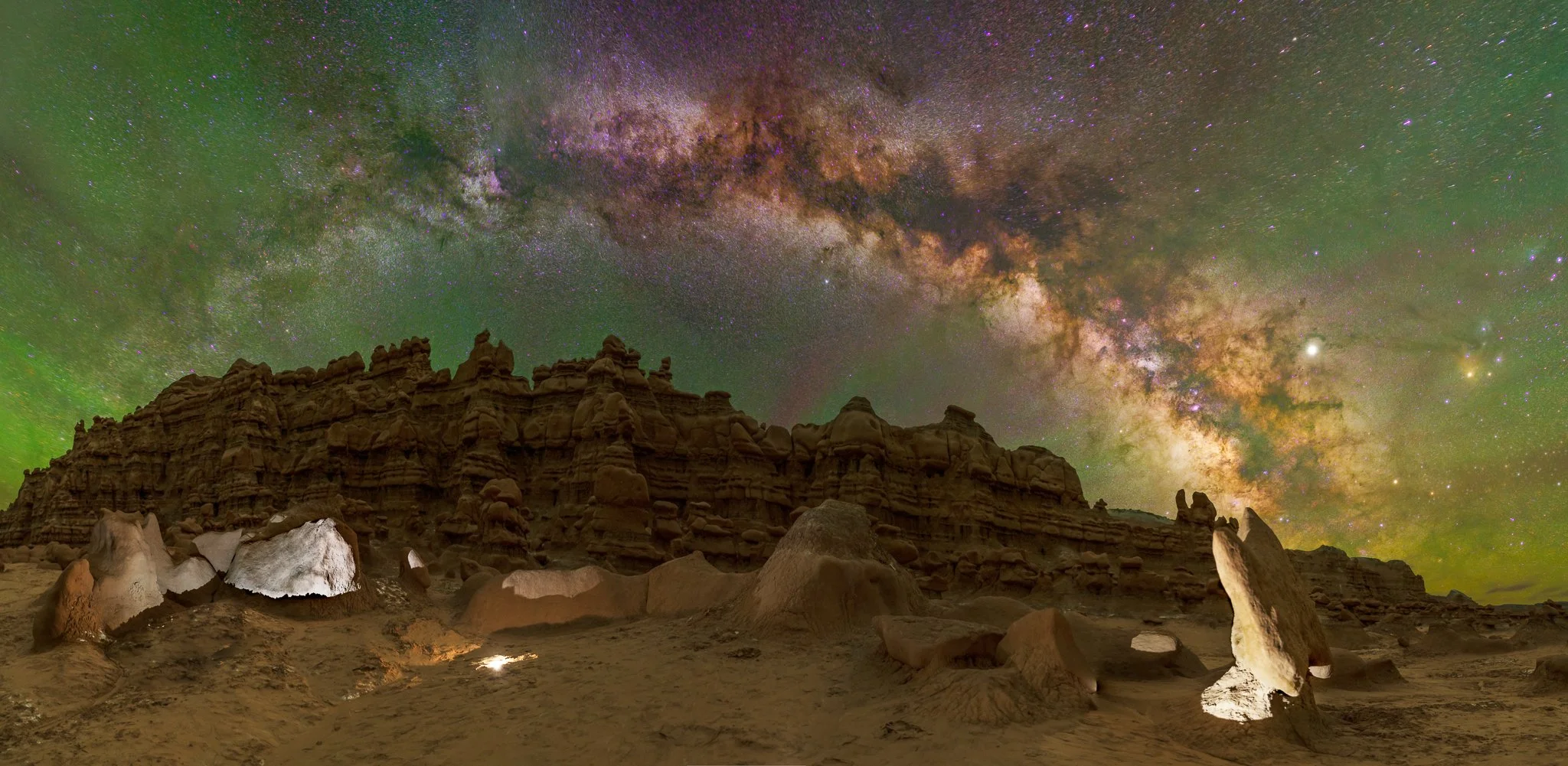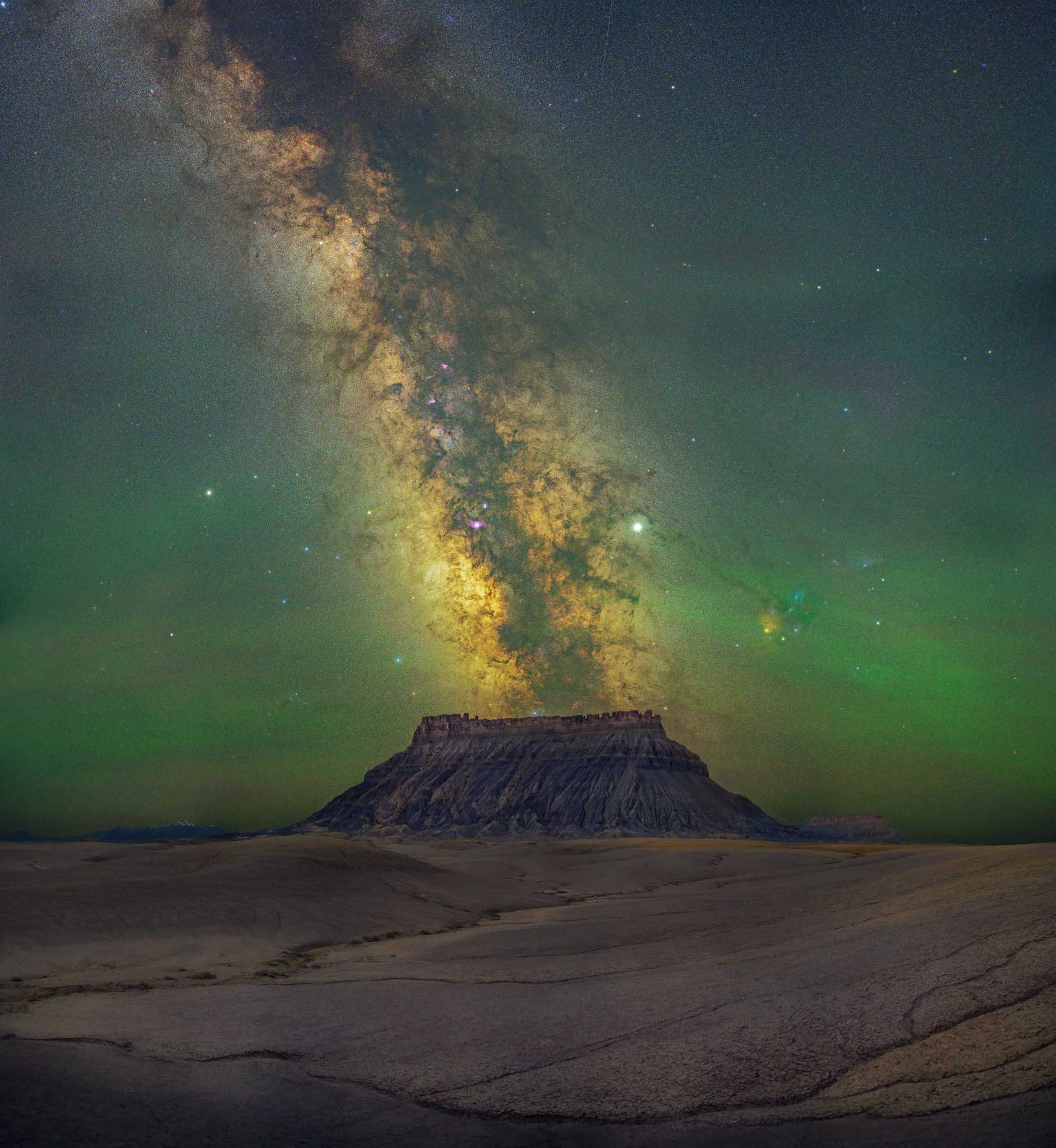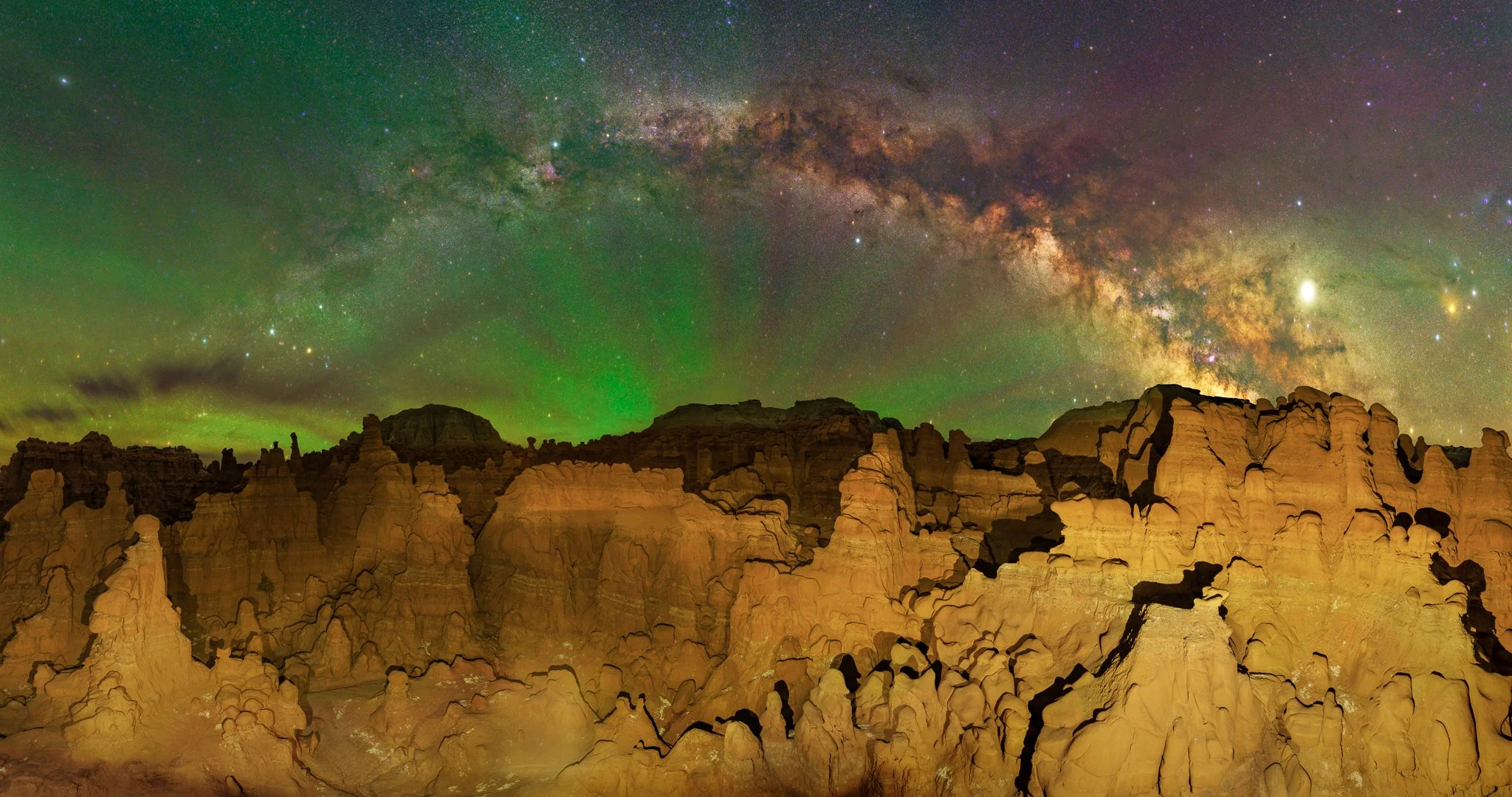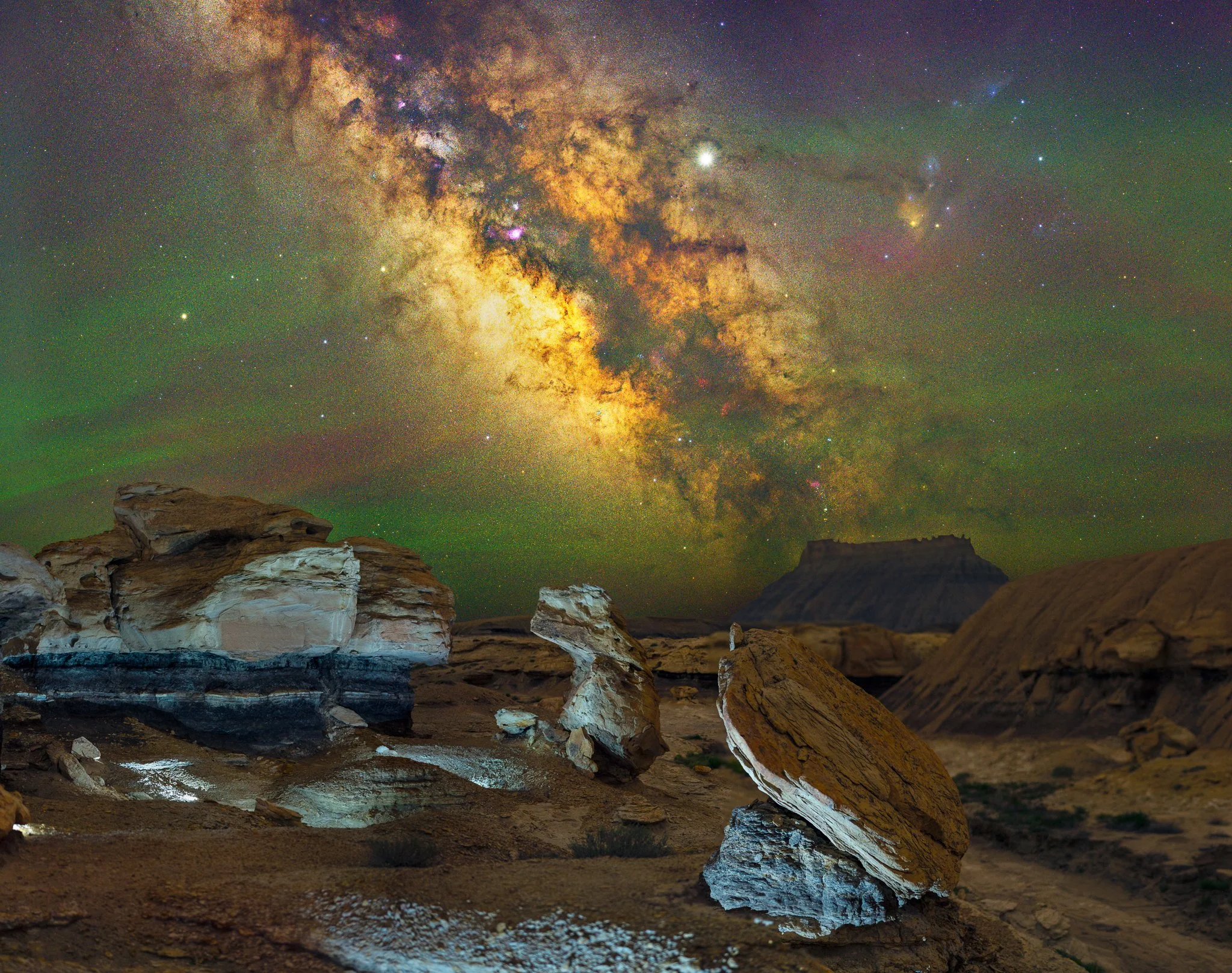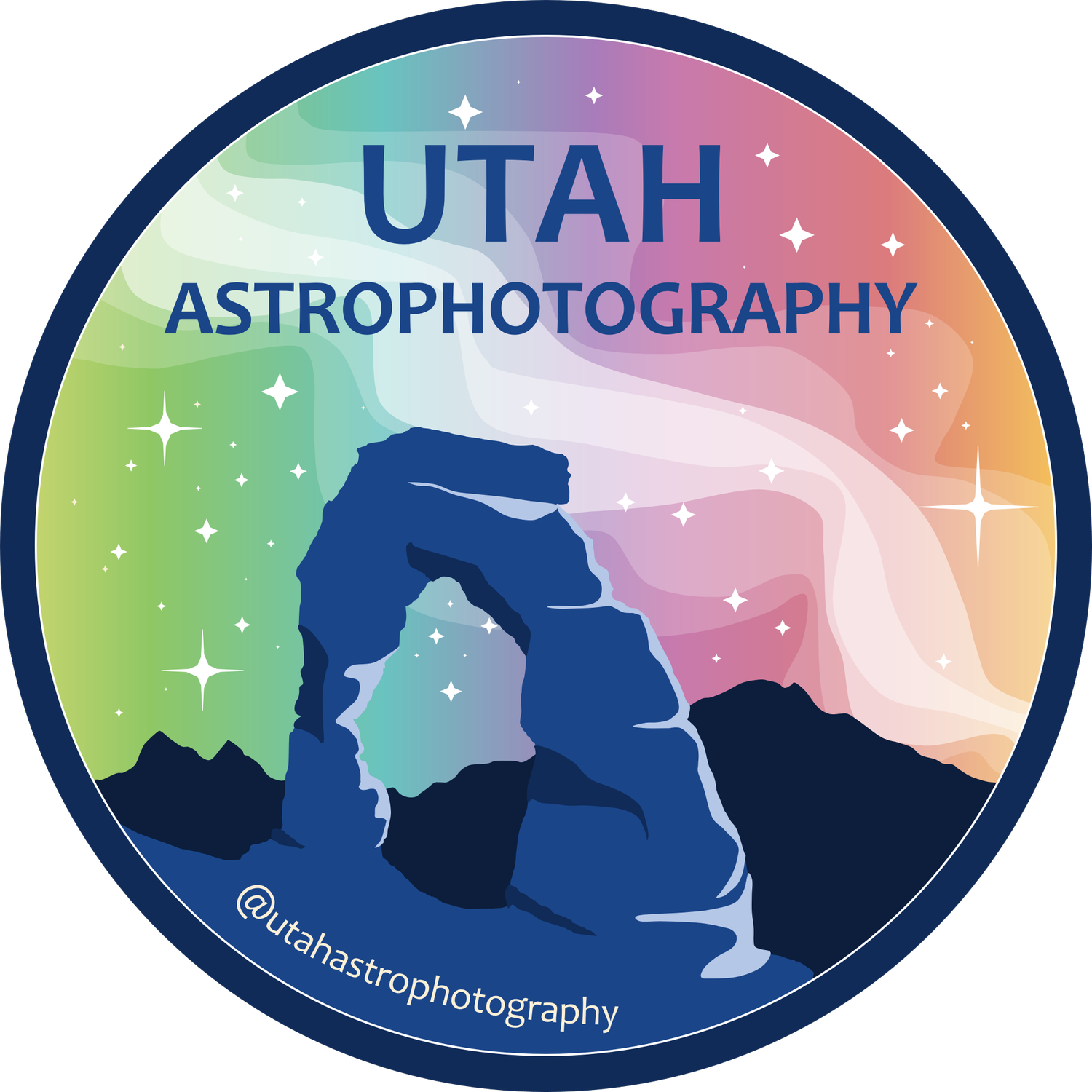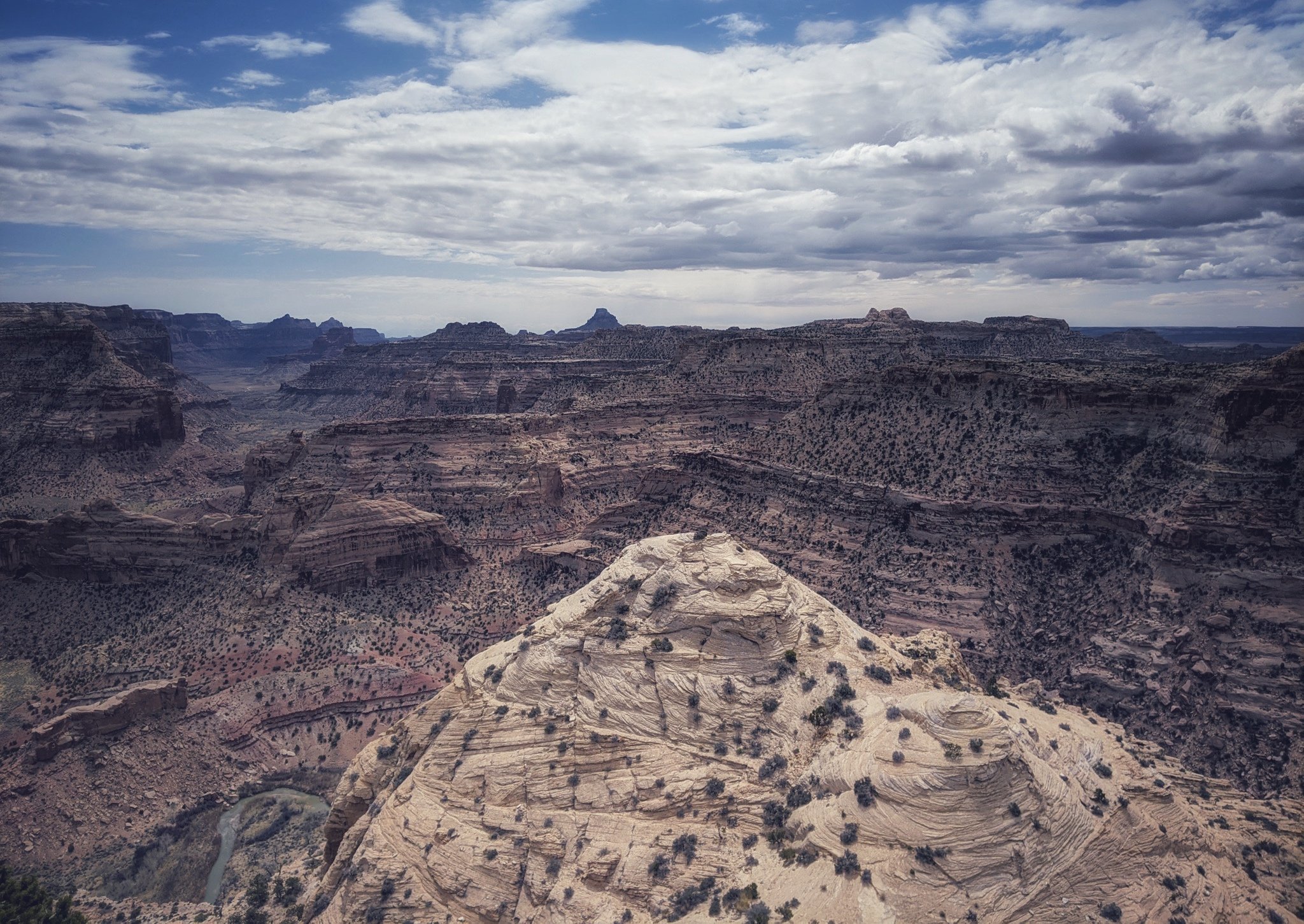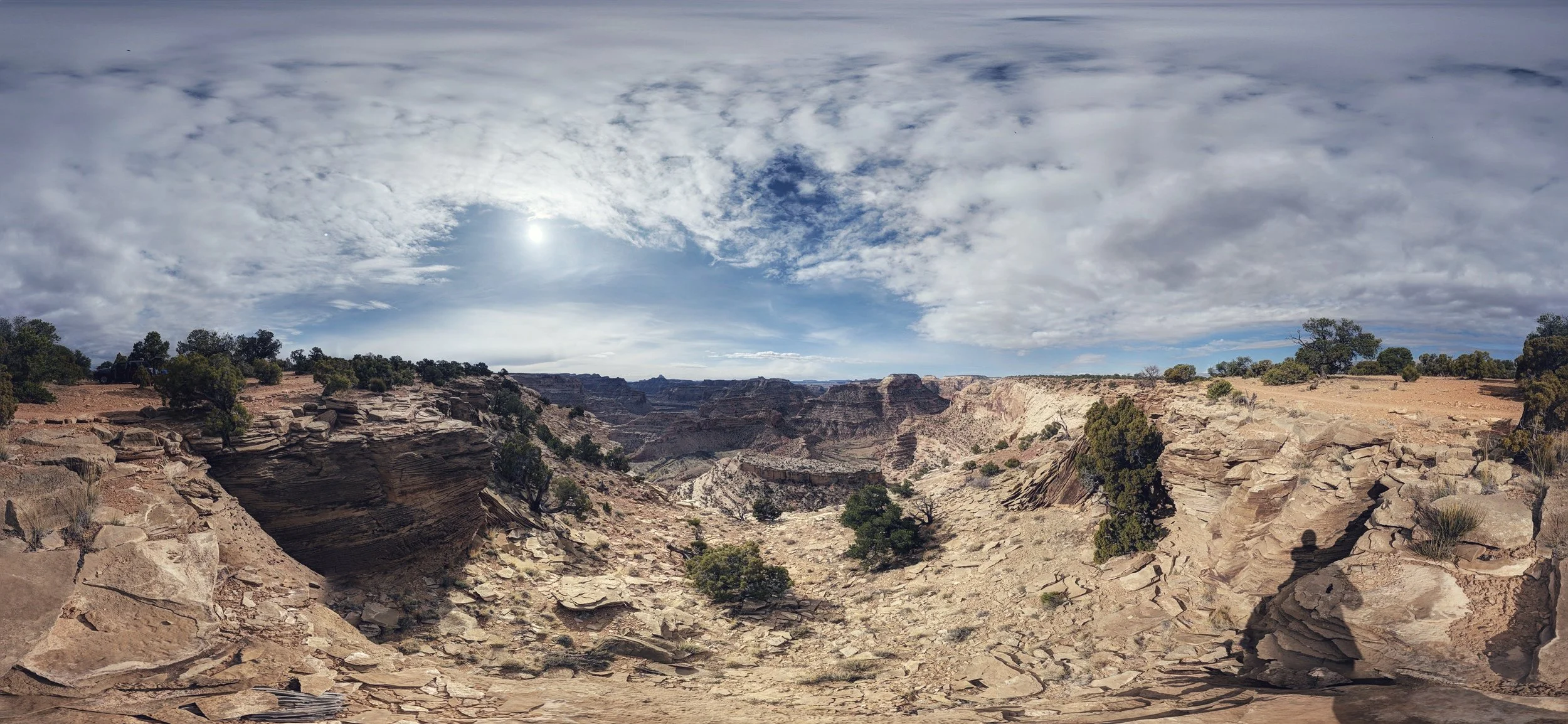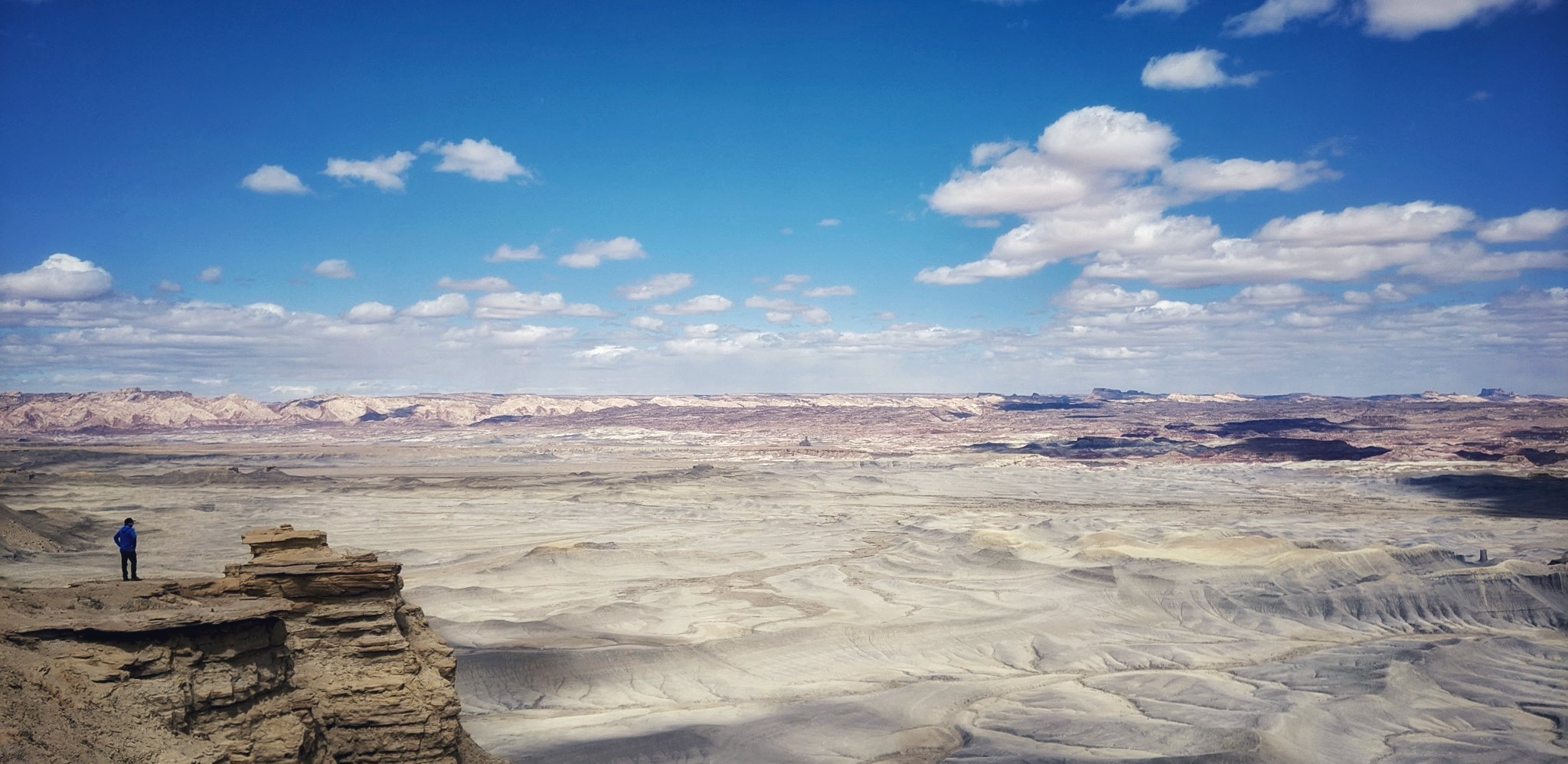
HANKSVILLE
The Hanksville area of Utah, located within Wayne County, is a region of significant geological interest, offering a diverse landscape that includes a wide range of sedimentary formations, striking landforms, and evidence of Earth’s dynamic history. This area is near the border of the Colorado Plateau, a region known for its extensive and well-preserved sedimentary rock layers.
GEOLOGY
Sedimentary Rock Formations: Hanksville is known for its layered sedimentary rock formations, which date from the late Paleozoic to the Mesozoic era. These formations include sandstone, shale, and limestone, with notable formations like the Navajo Sandstone, renowned for its massive sand dunes solidified into rock, and the Wingate Sandstone, recognized for its sheer cliffs and ledges.
Canyons and Badlands: The landscape around Hanksville is marked by numerous canyons, mesas, and badlands, sculpted by millions of years of erosion. Water and wind have carved deep canyons and intricate drainage patterns into the sedimentary rocks, creating a dramatic and rugged terrain.
Jurassic Era Landscapes: The area is particularly famous for its Jurassic-era landscapes, which include the Morrison Formation. This formation is known for its dinosaur fossils and has been a rich source of paleontological discoveries, providing insights into the ecosystems of the Jurassic period.
Goblin Valley State Park: Near Hanksville, Goblin Valley State Park showcases thousands of hoodoos - mushroom-shaped rock pinnacles formed through the differential erosion of sedimentary rocks. These unique formations are made of Entrada Sandstone, which dates back to the Jurassic period.
Water-Erosion Features: The region’s rivers and streams, including the Fremont River, have played a crucial role in shaping the landscape. Over time, flowing water has eroded the rock, forming slot canyons, natural bridges, and other erosional features that contribute to the area’s geological diversity.
Human History and Geology: The Hanksville area has a rich history of human interaction with its geology, from Native American cultures that inhabited the region to early settlers who mined the land for minerals. This human history is intertwined with the geological landscape, adding another layer of interest to the area.
Research and Exploration: The unique geological features of the Hanksville area make it an important location for geological research and education. The visible stratigraphy and accessible rock formations provide excellent opportunities for studying sedimentology, paleontology, and erosional processes. Additionally, the region’s resemblance to Martian landscapes has made it a site for analog research by NASA and other organizations, studying the processes that shape similar features on Mars.
